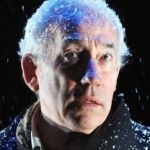please explainwestom wrote: Even disconnecting is insufficient and unreliable protection.
Do you stop using machine during thunderstorm with lightning
Re: Do you stop using machine during thunderstorm with lightning
May any shills trolls sockpuppets or astroturfers at cpaptalk.com be like chaff before the wind!
Re: Do you stop using machine during thunderstorm with lightning
I use a surge protector/extension cord while travelling.
In mid Massachusetts we had a thunder storm, and power outage. Lights out for a 1/2 hour. When the lights came back in the tv refused to start. It was plugged in to the same receptacle as my ResMed S8 with humidifier and I was using the surge protector.
My ResMed works fine to this day. The tv was dead.
In mid Massachusetts we had a thunder storm, and power outage. Lights out for a 1/2 hour. When the lights came back in the tv refused to start. It was plugged in to the same receptacle as my ResMed S8 with humidifier and I was using the surge protector.
My ResMed works fine to this day. The tv was dead.
_________________
| Mask: DreamWear Nasal CPAP Mask with Headgear |
| Humidifier: S9™ Series H5i™ Heated Humidifier with Climate Control |
| Additional Comments: S8 Ellite II Cpap Machine as backup |
Regards,
DaveL Toronto
DaveL Toronto
- chunkyfrog
- Posts: 34545
- Joined: Mon Jul 12, 2010 5:10 pm
- Location: Nowhere special--this year in particular.
Re: Do you stop using machine during thunderstorm with lightning
TV is connected to AC, and antenna or cable/satellite box.
If both the power and signal are not disconnected, a pathway remains.
If both the power and signal are not disconnected, a pathway remains.
_________________
| Mask: AirFit™ P10 For Her Nasal Pillow CPAP Mask with Headgear |
| Additional Comments: Airsense 10 Autoset for Her |
Re: Do you stop using machine during thunderstorm with lightning
You know, I can't tell for sure whether you believe the stuff you say, or if you're just a deliberate troll.Todzo wrote:The energy of lightning is in the 1-3 megahertz range. Not really high frequency but high enough that a loop in the wire creates enough inductance that the current is more likely to seek another path.archangle wrote:That's nonsense. It might actually blow up the knot, but it's not going to protect the equipment.sawinglogz wrote: A clever (though apocryphal) trick that they used to use in radio stations:
Tie a knot your wire.
Any giant surge of current will induce a huge magnetic field, which will in turn (thanks to the knot) "resist" the current (inductive reactance, technically). All that energy has to go somewhere, of course, so it basically vaporizes the wire at the knot.
Since no energy is absorbed by inductance, indeed, since is reduces the current that would flow in the wire it protects the wire as well as the downstream equipment.
Putting a loop in a wire will tend to limit the lightning current that can flow in that wire. I think of it as a way to protect the downstream surge protectors from currents which are too high for them. Any bend will help. A loop is a much much better choice than a knot.
Cable TV operates in the hundreds of megahertz. Go tie your TV cable in a knot and see if the signal goes away.
Lightning approximates an impulse function. It has energy at a wide range of frequencies and slowly decreases as frequency increases. The largest amount of energy is at DC and lower frequencies.
The knot will give a small amount of resistance (inductive reactance) to higher frequencies and only for common mode currents, i.e. currents where the same current flows in the same direction through all the wires. It will do nothing about differential mode currents, i.e. the current flows in one wire and back out through the other.
A knot in a power cord is going to be a single turn inductor. A single turn inductor of that size will not have enough inductance to make much difference, even at a few MHz.
In general -
Surge protectors are a lot like a cop wearing a "bullet proof" vest. Some bullets will go through the vest. Some bullets will go in the places where the vest doesn't cover, such as the face, legs, arms, armpits, sides, etc. They still improve the odds. You can use a bigger, heavier vest, but that has its cost and disadvantages. You can use body armor that covers more of the body, but that has weight, mobility, and heat costs. You can use a helmet, a face shield, carry a body shield, etc. You can be in an armored vehicle.
There are a lot of choices for body armor. There are a lot of tradeoffs. Nothing is perfect.
The same is true of surge protectors.
_________________
| Mask: Swift™ FX Nasal Pillow CPAP Mask with Headgear |
| Humidifier: S9™ Series H5i™ Heated Humidifier with Climate Control |
| Additional Comments: Also SleepyHead, PRS1 Auto, Respironics Auto M series, Legacy Auto, and Legacy Plus |
Please enter your equipment in your profile so we can help you.
Click here for information on the most common alternative to CPAP.
If it's midnight and a DME tells you it's dark outside, go and check for yourself.
Useful Links.
Click here for information on the most common alternative to CPAP.
If it's midnight and a DME tells you it's dark outside, go and check for yourself.
Useful Links.
Re: Do you stop using machine during thunderstorm with lightning
OK, just because I'm bored.
The knot in the power cord is roughly a 1 cm in diameter, .5 cm long, 1 turn coil.
Inductance is roughly 10 nanohenrys.
At 10 MHz, the inductive reactance is about .6 ohms.
If you had a 100 amp surge current, the voltage across the "coil" would be about 60 volts. Not going to make a very impressive dent in a lightning surge.
Once again, 10 MHz is the wrong frequency to characterize a lightning stroke. There will be more energy at lower frequencies, where the effect of the knot will be much less.
At 100 kHz, which is still probably too high, the inductive reactance would be only .006 ohms, and a 1000 amp surge current would only drop .6 V across the knot.
Real world results would be worse since the energy in lightning is at lower frequency than these calculations.
The knot in the power cord is roughly a 1 cm in diameter, .5 cm long, 1 turn coil.
Inductance is roughly 10 nanohenrys.
At 10 MHz, the inductive reactance is about .6 ohms.
If you had a 100 amp surge current, the voltage across the "coil" would be about 60 volts. Not going to make a very impressive dent in a lightning surge.
Once again, 10 MHz is the wrong frequency to characterize a lightning stroke. There will be more energy at lower frequencies, where the effect of the knot will be much less.
At 100 kHz, which is still probably too high, the inductive reactance would be only .006 ohms, and a 1000 amp surge current would only drop .6 V across the knot.
Real world results would be worse since the energy in lightning is at lower frequency than these calculations.
_________________
| Mask: Swift™ FX Nasal Pillow CPAP Mask with Headgear |
| Humidifier: S9™ Series H5i™ Heated Humidifier with Climate Control |
| Additional Comments: Also SleepyHead, PRS1 Auto, Respironics Auto M series, Legacy Auto, and Legacy Plus |
Please enter your equipment in your profile so we can help you.
Click here for information on the most common alternative to CPAP.
If it's midnight and a DME tells you it's dark outside, go and check for yourself.
Useful Links.
Click here for information on the most common alternative to CPAP.
If it's midnight and a DME tells you it's dark outside, go and check for yourself.
Useful Links.
- Drowsy Dancer
- Posts: 1271
- Joined: Mon Feb 28, 2011 9:35 am
- Location: here
Re: Do you stop using machine during thunderstorm with lightning
What is the bottom line, then, for one concerned about protection for equipment? If I am following the discussion (not certain by any means), is it accurate to conclude that:westom wrote:You are assuming protection of a protector is relevant. That is true for many grossly undersized protectors recommended to and purchased by consumers. When installing effective protection (ie earthing a 'whole house' protector), we want the lowest impedance for a surge (maximum current) through that protector to earth. Good protectors need no such protection.Todzo wrote: If the impedance in the line limits the current through the surge protector the device has a better chance.
When it comes to protection, wire (as short as possible, no sharp bends, no splices, etc) is a best protector. Because it creates lowest impedance and voltage. Protectors are used only when superior protection (a wire) cannot be implemented. But again, voltage is only a symptom of undesirable impedance or other undesirable obstructions. Protection is always about a current that cannot be stopped. That will blow through anything that tries to stop it (ie a knot). That current is why a 'whole house' protector is at least 50,000 amps.
Many discuss surge protection in terms of a voltage. Protection is always about a current source. A concept rarely understood by consumers and so many who recommend plug-in protectors. Nobody need to learn such details. But discussing such details defines the fewer who understand surge protection. Why a protector must be both distant from electronics and within feet of earth ground. And also why knots are virtually near zero protection.
If frequency was less than one million cycles, a knot would be almost non-existent. A knot is only one step above near zero for typical surges. Since a surge is a current source, it must have a low impedance connection to earth. Voltage is only a symptom of excessive impedance.
(1) the risk of damage to one's equipment at the hands of rogue electricity is greater than the risk of damage to one's person at the hands of rogue electricity;
(1) knots are useless for providing protection to equipment;
(2) plug-in protectors are useless for protecting, but some people find their use comforting;
(3) a whole-house protector is not useless, but can only function if the house on which it is installed is up-to-code electrically.
(4) a protector of choice should be away from the protected electronic and near the earth ground (but it sounds like anything other than a whole-house proctor is pointless).
_________________
| Machine: PR System One REMStar 60 Series Auto CPAP Machine |
| Mask: Swift™ FX Bella Nasal Pillow CPAP Mask with Headgears |
| Additional Comments: Software: SleepyHead. Pressure: APAP 9.5 min/11 max, A-Flex x2 |
How we squander our hours of pain. -- Rilke
Re: Do you stop using machine during thunderstorm with lightning
Here is the bottom line for me. We lived in our previous house for 20 years and lightning blew up electronics several times. (I think it was because we had a large tree just a few feet from the house.) In that house, I would worry about my CPAP and consult with an electrician.What is the bottom line, then, for one concerned about protection for equipment?
We have been in our current house 18 years and never had a problem with lightning. I don't worry about my CPAP. Having two backup CPAPs may also moderate my concerns.
Be reasonable in your fears.
Sheffey












